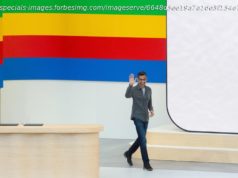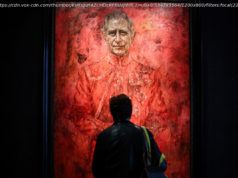The movie theater industry has been around for over 100 years, but unprecedented times have created a perfect storm for the demise of movie theaters.…
The movie theater industry has been around for over 100 years, but unprecedented times have created a perfect storm for the demise of movie theaters.
« We should be a month into summer blockbusters, and we don’t even know if they’re going to show up this summer, » Jeff Bock, senior box-office analyst at Exhibitor Relations, told Business Insider.
Steadily declining ticket sales and now-shuttered movie theaters and palaces nationwide have put the fates of summer blockbusters into question.
Here is a look at the rise and fall of movie theaters — and a solution that could potentially save the industry.
Early « movies » were nothing special compared to the blockbuster films of today — they were short, black-and-white, silent films that showed everyday occurrences like workers leaving a factory after the workday or a train entering a station.
However, they delighted, amazed, and even shocked audiences of the late 1800s.
Built by and named after Thomas Lincoln Tally, the theater was the first building to be built specifically for the exhibition of films, rather than a combination of films and live performances.
The theater opened its door on April 2,1902, in Los Angeles, California, according to the Times Union. The theater was an instant success, and after tickets for its night showings between 7:30 p.m. and 10:30 p.m. began to consistently sell out, Tally decided to add matinee shows as well.
The movies were first shown in Davis’ and Harris’ own theater, the Nickelodeon. However, the concept of « Nickelodeon » theaters, which got their name from the 50-cent charge for patrons, would soon become popular nationwide. The theaters showed both short films and live vaudeville performances.
According to History.com, by 1907, around 2 million Americans had visited a Nickelodeon theater. The storefront theaters remained the most popular outlet for film-viewing until many of them were replaced by larger theaters built in the 1910s.
Not only were movie theaters unable to play more than one movie at once, they also lacked sound up until the 1920s. Instead, films would either be silent or live music would be played inside the theater to accompany the images on the screen.
Films with sound were added in 1927, which opened the movie-going experience up to a much wider audience. Cinema visitors no longer had to be literate to enjoy a film.
According to Smithsonian Magazine, by 1930 movie theater attendance had reached more than 90 million visitors per week.
Before the 1920s, movie theaters were seen as a low-class pastime. However, movie theater owners wanted to change this reputation in order to attract a more upscale clientele.
Many theaters, called « movie palaces, » would feature stunning interiors with carved ceilings, luxurious seats, and expensive carpets. Visitors would dress in their best clothes to attend the cinema, often pictured wearing top hats, coats, and other glamorous attire.
It’s hard to imagine movie theaters without popcorn. However, there was a time when the snack was explicitly banned. While popcorn was a popular treat at entertainment sites like circuses and fairs in the late 1800s, movie theaters didn’t allow the food to be sold.
« Movie theaters wanted nothing to do with popcorn because they were trying to duplicate what was done in real theaters. They had beautiful carpets and rugs and didn’t want popcorn being ground into it, » Andrew Smith, author of « Popped Culture: A Social History of Popcorn, » told Smithsonian Magazine.
Instead, popcorn vendors would park their carts outside and sell them to people entering the theater. However, during the Great Depression, once-prestigious movie theaters began selling the snack in an effort to appeal to wider audiences.
On Tuesday, June 6,1933, Richard Hollingshead opened the first « park-in » movie theater in Camden, New Jersey.
According to History.com, Hollingshead came up with the idea after listening to his mother complain about not being able to sit comfortably in movie theater seats.
He then began experimenting with different projectors in order to open the first open-air theater, where viewers could drive into the lot and watch films from the comfort of their own automobiles.
According to History.






